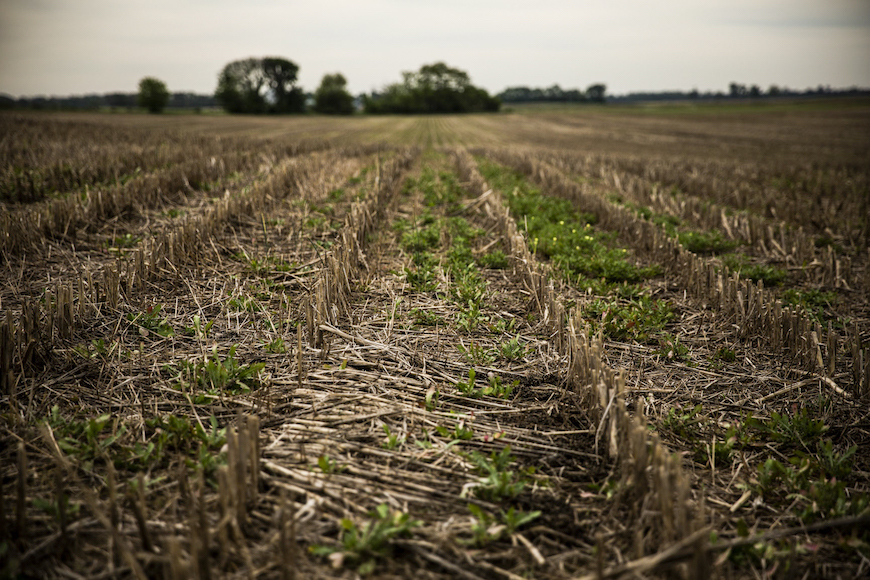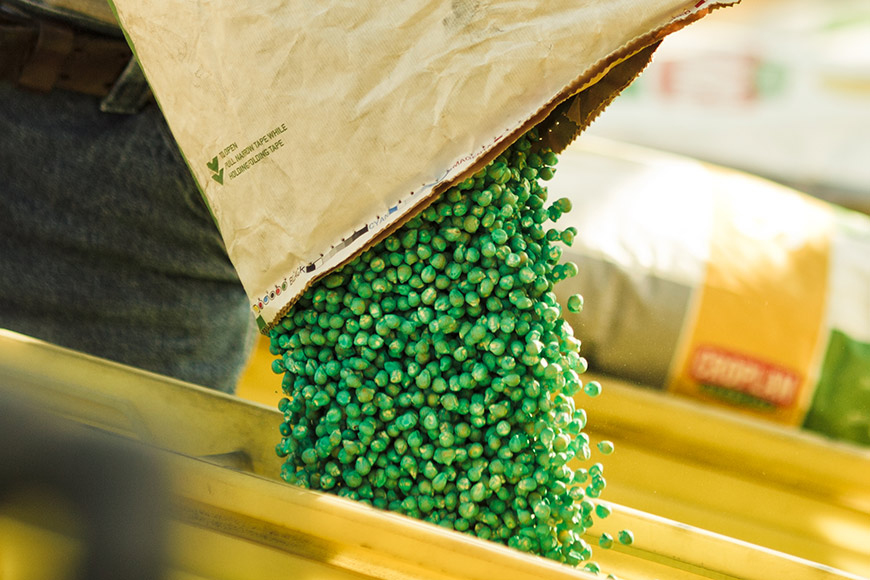Don’t Lose Ground With Poor Management on Prevented-Plant Acres

Farmers across the Midwest have struggled to get crops planted this season. In many situations, it was impossible to get crops in at all. When the difficult decision to abandon planting is made, it doesn’t mean you can just give up on managing those acres. With nothing planted, there could be implications for future crops if you don’t make the right decisions. Here are some tips to help manage prevented-plant acres.
Every situation is different, but I’ve seen farmers have success using 2,4-D as a burndown on prevented-plant acres. A product like Rugged® herbicide mixed with glyphosate and appropriate adjuvants can provide broad-spectrum control of broadleaf weeds and grasses. One unique benefit of Rugged is that it is an acid formulation, which means it’s effective even when weeds are not actively growing, such as in the cool, wet conditions many have experienced this spring. The acid formulation of Rugged also tends to be less volatile than other 2,4-D or dicamba burndown products, making it a great option to protect sensitive crops that may be growing in the area.
The right adjuvant partners are crucial for effective weed control on prevented-plant acres. Appropriate water conditioners, crop oils, methylated seed oils and nonionic surfactants can help increase herbicide efficacy by getting more of the active ingredient into the weed. For example, InterLock® adjuvant improves spray deposition by keeping more droplets within the proper size range for maximum weed coverage. It also reduces the risk of drift and evaporation of the spray, keeping more active ingredient on target.
Failing to manage weeds on prevented-plant acres can have severe consequences for future crops. You don’t want to lose the time and money you’ve spent to keep fields clean by abandoning weed-control efforts for one season.
Cover crops can also help remove excessive moisture from fields and help improve soil health. When choosing your cover crop mix, consider a blend with varying root depths to help prevent compaction and hardpan issues. Cover crops can also help reduce soil erosion and retain soil nutrients. Your agronomist can help you choose cover crops that will help manage and sequester the nitrogen you’ve already applied to fields. Or if you need to add nitrogen to the soil, there are cover crop options that can help with that, too.
Planting cover crops can also help suppress weeds. Consider what weeds are the most troublesome and choose a cover crop blend that can outcompete them. You’ll need to consider your herbicide management plan when choosing cover crops, so work with your agronomist to find an option that will work based on the herbicides you’ve already applied or plan to apply.
The USDA recently announced that farmers and ranchers who plant certain cover crops on prevented-plant acres will be able to hay, graze or chop those fields starting September 1, 2019, while remaining eligible for their prevented-planting payments. Work with your crop insurance agent to learn about the restrictions and qualifications.
If you plan to plant cover crops on fallow ground, consider what you plan to do with those acres next spring, as that could help guide your cover crop choices. The bottom line is to work closely with your agronomist and crop insurance agent to ensure you’re managing prevented-plant acres to meet your operational goals.
For specific prevented-plant recommendations, talk with your locally owned and operated WinField United retailer.
© 2019 WinField United. InterLock®, Rugged® and WinField® are trademarks of WinField United.
Stay ahead of weed pressure on prevent plant acres
One of the most pressing issues with prevented-plant acres is weed pressure. With no crops to compete with, they can easily overtake a field that isn’t managed effectively. It’s easiest to manage weeds when they are small, and that should require less follow-up treatment later in the season. If left to go to seed, weed populations can increase dramatically in just one season.Every situation is different, but I’ve seen farmers have success using 2,4-D as a burndown on prevented-plant acres. A product like Rugged® herbicide mixed with glyphosate and appropriate adjuvants can provide broad-spectrum control of broadleaf weeds and grasses. One unique benefit of Rugged is that it is an acid formulation, which means it’s effective even when weeds are not actively growing, such as in the cool, wet conditions many have experienced this spring. The acid formulation of Rugged also tends to be less volatile than other 2,4-D or dicamba burndown products, making it a great option to protect sensitive crops that may be growing in the area.
The right adjuvant partners are crucial for effective weed control on prevented-plant acres. Appropriate water conditioners, crop oils, methylated seed oils and nonionic surfactants can help increase herbicide efficacy by getting more of the active ingredient into the weed. For example, InterLock® adjuvant improves spray deposition by keeping more droplets within the proper size range for maximum weed coverage. It also reduces the risk of drift and evaporation of the spray, keeping more active ingredient on target.
Failing to manage weeds on prevented-plant acres can have severe consequences for future crops. You don’t want to lose the time and money you’ve spent to keep fields clean by abandoning weed-control efforts for one season.
Consider the benefits of a cover crop on prevent plant acres
When ground is left fallow for a period of time and then replanted to corn, the crop may not get a vigorous, healthy start. That’s because when nothing is planted, populations of beneficial mycorrhizae fungus in the soil decreases. Mycorrhizae are critical for healthy root growth and help plants access and efficiently take up water and nutrients from the soil. Phosphorus deficiency is common in corn planted after a field is left fallow for one season. Planting grass cover crops, including cereal rye, wheat or oats, can help counteract the effects of fallow syndrome on the subsequent corn crop.Cover crops can also help remove excessive moisture from fields and help improve soil health. When choosing your cover crop mix, consider a blend with varying root depths to help prevent compaction and hardpan issues. Cover crops can also help reduce soil erosion and retain soil nutrients. Your agronomist can help you choose cover crops that will help manage and sequester the nitrogen you’ve already applied to fields. Or if you need to add nitrogen to the soil, there are cover crop options that can help with that, too.
Planting cover crops can also help suppress weeds. Consider what weeds are the most troublesome and choose a cover crop blend that can outcompete them. You’ll need to consider your herbicide management plan when choosing cover crops, so work with your agronomist to find an option that will work based on the herbicides you’ve already applied or plan to apply.
The USDA recently announced that farmers and ranchers who plant certain cover crops on prevented-plant acres will be able to hay, graze or chop those fields starting September 1, 2019, while remaining eligible for their prevented-planting payments. Work with your crop insurance agent to learn about the restrictions and qualifications.
Adjust your management plan for next season
If you have prevented-plant acres, you’ll need to work with your agronomist to understand what the implications for next season might be. Starter fertilizers that contain phosphorus or zinc are a good option if you’re planning to plant corn next season on ground that was left fallow this year. Soybeans seem to be less sensitive to fallow syndrome, so you may choose to switch up your rotation.If you plan to plant cover crops on fallow ground, consider what you plan to do with those acres next spring, as that could help guide your cover crop choices. The bottom line is to work closely with your agronomist and crop insurance agent to ensure you’re managing prevented-plant acres to meet your operational goals.
For specific prevented-plant recommendations, talk with your locally owned and operated WinField United retailer.
© 2019 WinField United. InterLock®, Rugged® and WinField® are trademarks of WinField United.



.jpg?ext=.jpg)

